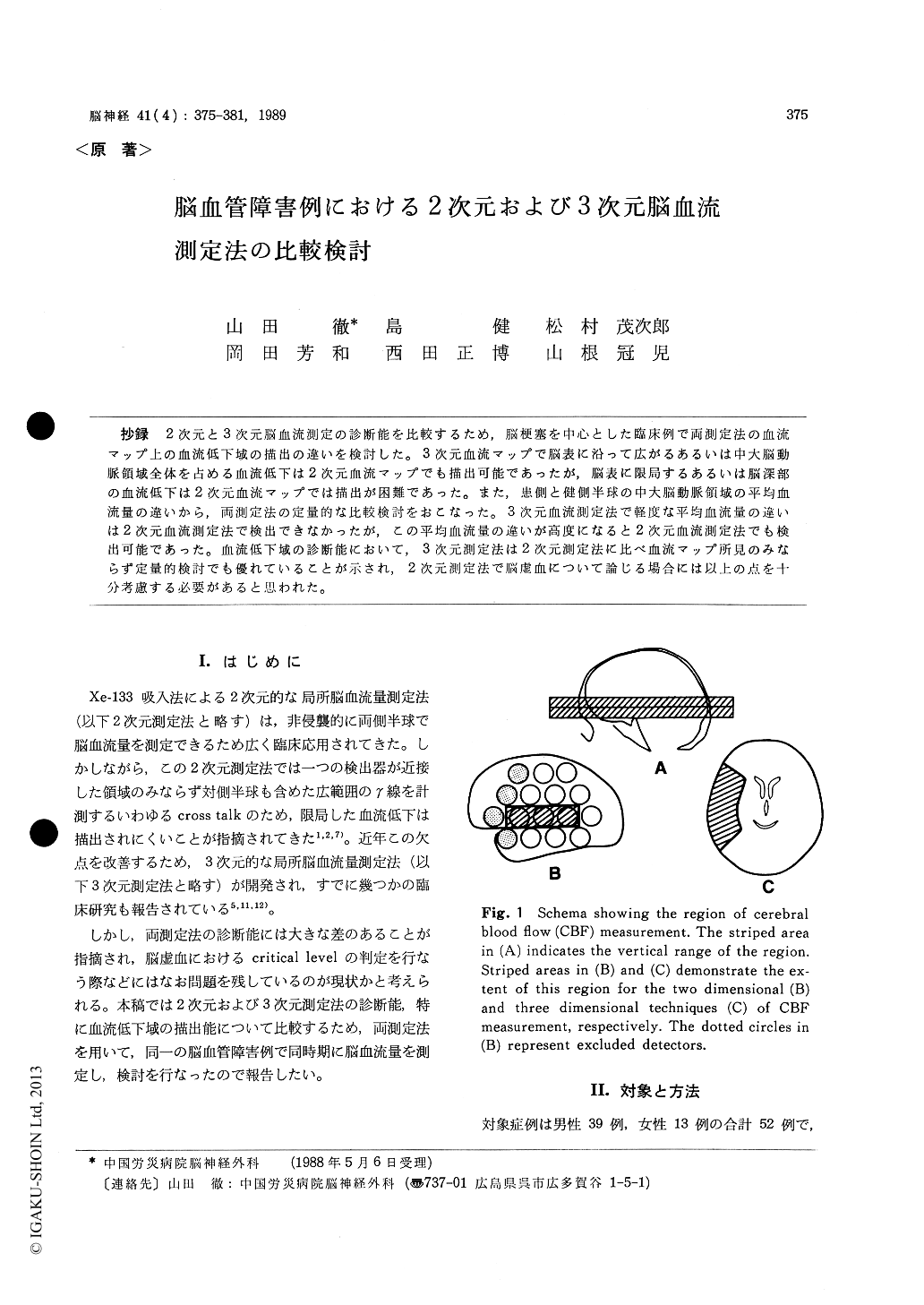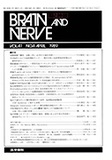Japanese
English
- 有料閲覧
- Abstract 文献概要
- 1ページ目 Look Inside
抄録 2次元と3次元脳血流測定の診断能を比較するため,脳梗塞を中心とした臨床例で両測定法の血流マップ上の血流低下域の描出の違いを検討した。3次元血流マップで脳表に沿って広がるあるいは中大脳動脈領域全体を占める血流低下は2次元血流マップでも描出可能であったが,脳表に限局するあるいは脳深部の血流低下は2次元血流マップでは描出が困難であった。また,患側と健側半球の中大脳動脈領域の平均血流量の違いから,両測定法の定量的な比較検討をおこなった。3次元血流測定法で軽度な平均血流量の違いは2次元血流測定法で検出できなかったが,この平均血流量の違いが高度になると2次元血流測定法でも検出可能であった。血流低下域の診断能において,3次元測定法は2次元測定法に比べ血流マップ所見のみならず定量的検討でも優れていることが示され,2次元測定法で脳虚血について論じる場合には以上の点を十分考慮する必要があると思われた。
The purpose of this study is to compare the detectability of the reduction in cerebral blood flow (CBF) using the two versus the three dimensional technique of CBF measurement. Both techniques were simultaneously carried out 85 times on 52 stroke patients.
In the two dimensional technique, CBF was mea-sured by the Xe-133 inhalation method and the value was calculated by the initial slope index. In the three dimensional technique, CBF was mea-sured by single photon emission CT with Xe-133 inhalation method. CBF reduction was studied in the middle cerebral artery (MCA) territory on a CBF map in both techniques. Additionally, mean CBF was also calculated for the same territory. On the CBF map, the CBF reduction was shown in 25 of 85 measurements with the two dimensionaltechnique and in 41 of 85 with the three dimension-al technique. In comparing the imagings of both techniques, the CBF reduction seen extensively along the cortical surface and in the entire MCA territory with the three dimensional technique was also detected with the two dimensional technique. However, focal CBF reduction observed at the cortical surface and in the deep cerebral tissue with the three dimensional technique was not de-tected with the two dimensional technique.
In order to evaluate both techniques quantita-tively, we calculated the ratio of the mean CBF difference between the MCA territories of both hemispheres to mean CBF in the non-affected MCA territory. This ratio represented the asym-mentry index. Firstly, the relationship between asymmetry index and the imaging of CBF reduc-tion on the CBF map was studied. All measure-ments except one with abnormal asymmetry in-dices showed CBF reduction on the CBF map. This suggests that qualitative findings from the CBF map correspond to the quantitative results of the asymmetry index calculation. Secondly, the asymmetry index calculations using the two di-mensional versus the three dimensional technique were compared. The case with the higher asym-metry index value measured with the three dimen-sional technique also showed a corresponding higher value with the two dimensional technique. However, the case with the smaller index value measured with the three dimensional technique did not show a corresponding value with the two di-mensional technique. This suggests that the two dimensional technique can not quantitatively detect a small reduction in CBF.
The three dimensional technique of CBF mea-surement was superior to the two dimensional technique not only with respect to imagings of CBF reduction on the CBF map, but also for quantitative determination based on the asymmetry index calculation. The limitations of the two di-mensional technique as shown in the present qual-itative and quantitative studies were considered to be largely due to "cross talk". These results sug-gested that the limitations of the two dimensional technique should be considered when using this technique clinically.

Copyright © 1989, Igaku-Shoin Ltd. All rights reserved.


